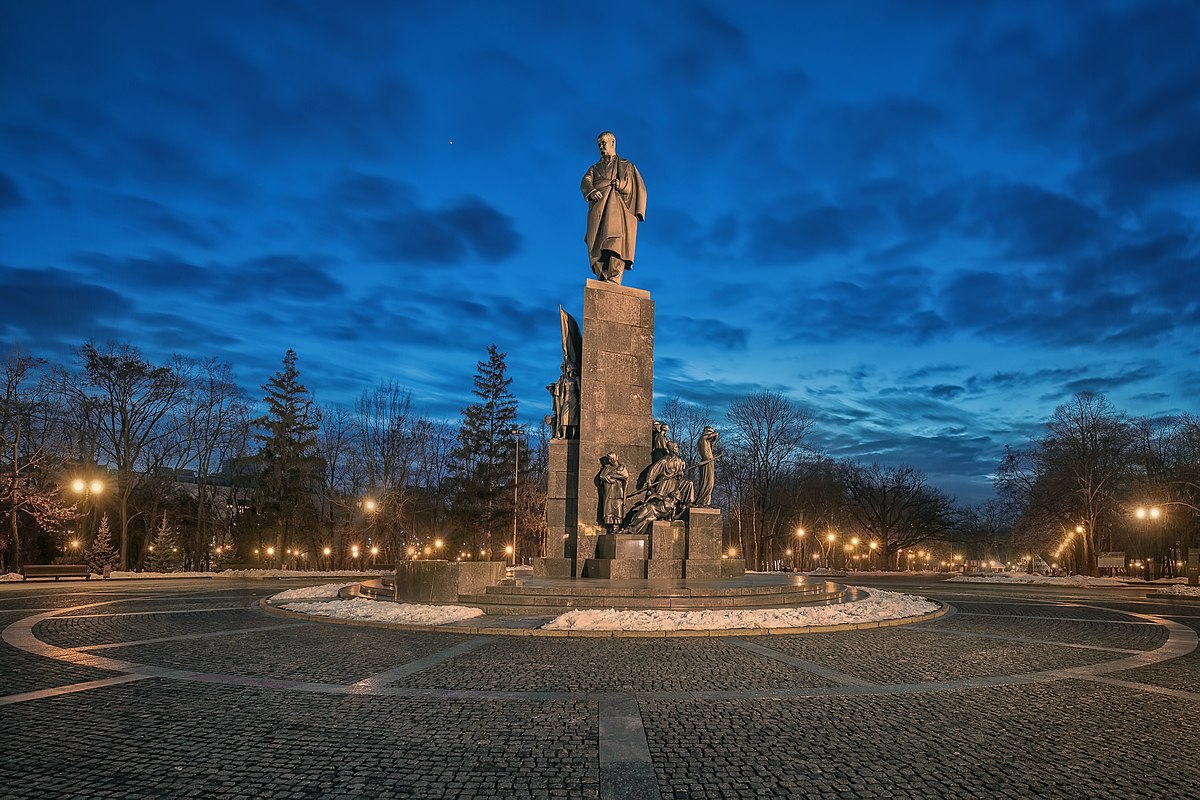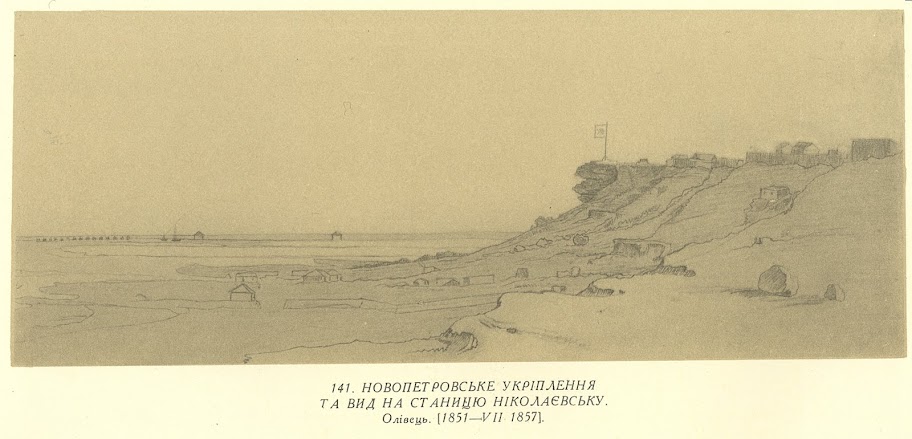
Only Jesus Christ has more monuments in the world than Taras Shevchenko. Interesting facts about the Ukrainian poet
On March 9, 1814, Taras Shevchenko was born in the village of Moryntsi, Cherkasy region. During his lifetime, he became a symbol of resistance to Russian expansion and the Ukrainian people’s struggle for freedom and independence.
We will not speculate whether the date of the massive shelling is a coincidence or not. We’ve already talked about the kind of missiles Russians are firing at Ukraine. Now let’s talk about the author of the lines that have been inspiring Ukrainians to continue their struggle for centuries. The MC.today editorial team has collected interesting facts about Kobzar.
“He will either be something very good or a great lazy man”
- Taras Shevchenko’s mother was a free peasant who married a serf. Although the family was a serf, they did not live in poverty. One of his maternal grandfathers, Yakym Boyko, had a blacksmith shop and an apiary, and his father was a chumak. If we compare this to the present, my father was a trucker. He also ran a service station, as we would say now.
From his birth until Shevchenko was redeemed from serfdom in 1838, he “belonged” to the Russian landowner Vasyl Engelhardt, who was the nephew of Hryhoriy Potemkin. - Taras was the only one of six children who was sent to a clergyman’s school at the age of 8. Taras’s father believed that his son had no aptitude for housekeeping or agriculture. His oral will contained the following words: “My son Taras does not need anything from my household. He will either be something very good or a great lazy man.”
- Myron Hordiichuk, head of the Taras Shevchenko Literary and Memorial House-Museum and a candidate of historical sciences, says that Shevchenko’s life story is a story of a serf’s success. He is a man who made himself. For Shevchenko, the only way to make a better life was to become an icon painter. When he was 12-15 years old, he was ready to walk 15-20 kilometers through villages looking for a mentor.
- Taras earned his first money by helping to perform funeral services for the dead-he was a priest’s assistant.
In 1831, Engelhardt took Shevchenko with him to St. Petersburg and sent the young man to study painting. There he met many prominent artists and former Ukrainian serfs, and wrote his first works. - In 1838-1843 Shevchenko studied at the St. Petersburg Academy of Arts. Here he created the manuscript of his future collection Kobzar.
- Engelhardt set a price of 2,500 rubles for Shevchenko’s ransom from serfdom. At the time, this was the annual income of a small estate or village. To raise the money, the artist Karl Brullov painted a portrait of the poet Vasyl Zhukovsky. It was drawn in a lottery among the imperial family on May 4, and on May 7, 1838, Shevchenko was given a vacation allowance.
“Our Ukraine has been desecrated”: a trip to the Motherland
- In 1843-1847 Taras Shevchenko traveled around Ukraine. At that time, he wrote many anti-imperial works that could not be published officially. They were secretly reprinted and learned by heart. Here is what he wrote about that time in a letter to his friend in 1844: I was in Ukraine last year – I was at the Mezhyhirya Savior’s Church and at Khortytsia, I was everywhere and cried all the time, our Ukraine was desecrated, the executioners’ faith, the dumbness with the Moskals; at least they have been told.
- In 1847, Shevchenko was arrested for his “dreams about the possibility of Ukraine’s existence as a separate state” expressed in his collection Kobzar. He then spent 10 years in arrest and exile, and continued to write and paint despite the ban.
- After his release, he was banned from visiting Ukraine. In 1859, he was allowed to return to his homeland, but was arrested the same year.
- In 1861, Taras Hryhorovych published a primer at his own expense. The book was published in 10 thousand copies and was intended for learning to read and write in free schools.
- In 1860, Shevchenko’s last collection “And I grew up in a foreign land…” was published. In 1861, he died in St. Petersburg, and was reburied in Kaniv on Chernecha Hill according to his will.
- The poet spent 15 of his 47 years of life in Ukraine.
- Now it seems to us that 47 is not enough, but in fact it even exceeds the average life expectancy at that time.
Kobzar’s work through time
- If you hear that Taras Shevchenko wrote for peasants, keep in mind that at that time only a small number of peasants could read. They began to be told who Taras Shevchenko was only at the end of the nineteenth century. During his lifetime, Shevchenko was read mainly by educated nobles. His audience were natives of Ukraine who remembered it. Since the 1930s, everything Ukrainian was in vogue in St. Petersburg. It was the closest thing to exoticism.
- The first Kobzar, which was published in 1840 in a print run of 1,000 copies, was sold out in two weeks. Since then, Kobzar has been reprinted more than 8 million times. There is even a museum in Cherkasy dedicated to this poetry collection.
- Taras Shevchenko’s works have been translated into more than a hundred languages. Among them are Japanese, Korean, Arabic, and the international language of Esperanto. Most translations are into Polish, English, and Russian.
- In the Soviet Union, there was a paradoxical situation with the publication and distribution of Shevchenko’s works: the communist authorities made him a “fighter for the people’s truth,” a “revolutionary democrat,” and replicated him in millions of copies. At the same time, however, there was a ban on the study, use, and distribution of Kobzar’s works, which the authorities considered “anti-Soviet.” Suspicious were primarily those in which he criticized the Russians. Books that did not suit the Soviet authorities were sent to closed special funds.
- In the mid-twentieth century, pupils and students were allowed to study only official Soviet publications with Shevchenko’s works, and those who used inappropriate books could be convicted of anti-Soviet agitation, up to 10 years in camps.
The record holder for the number of monuments erected
- Taras Shevchenko is the world record holder for the number of monuments erected – only Jesus Christ has more monuments. “The Ukrainian Book of Records recorded that there are 1167 monuments to Taras Shevchenko in the world. Of these, 99 are in 44 foreign countries and 1068 are in Ukraine. The first monument to Taras Shevchenko was erected in 1881 in the city of Fort Shevchenko, where the poet was serving his exile. It is the center of the Tupkaragan district of the Mangistau region of Kazakhstan.
 A sketch from the place of exile. Now the city of Fort Shevchenko.
A sketch from the place of exile. Now the city of Fort Shevchenko. - A mountain peak in the North Caucasus (4.2 thousand meters high), a sea strait in the Aral Sea, and even a crater on Mercury with a diameter of 137 kilometers are named after Kobzar.
- In 2000, Leo Moll, a Canadian sculptor of Ukrainian descent, presented St. Petersburg with a bronze monument to Taras Shevchenko. It was installed on a square in the Petrogradsky district of St. Petersburg, which has been called Shevchenko Square since 2001. The monument was unveiled on December 22, 2000, in the presence of Vladimir Putin and then-President of Ukraine Leonid Kuchma.

